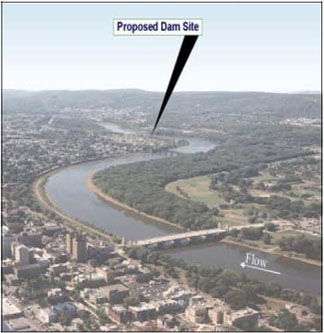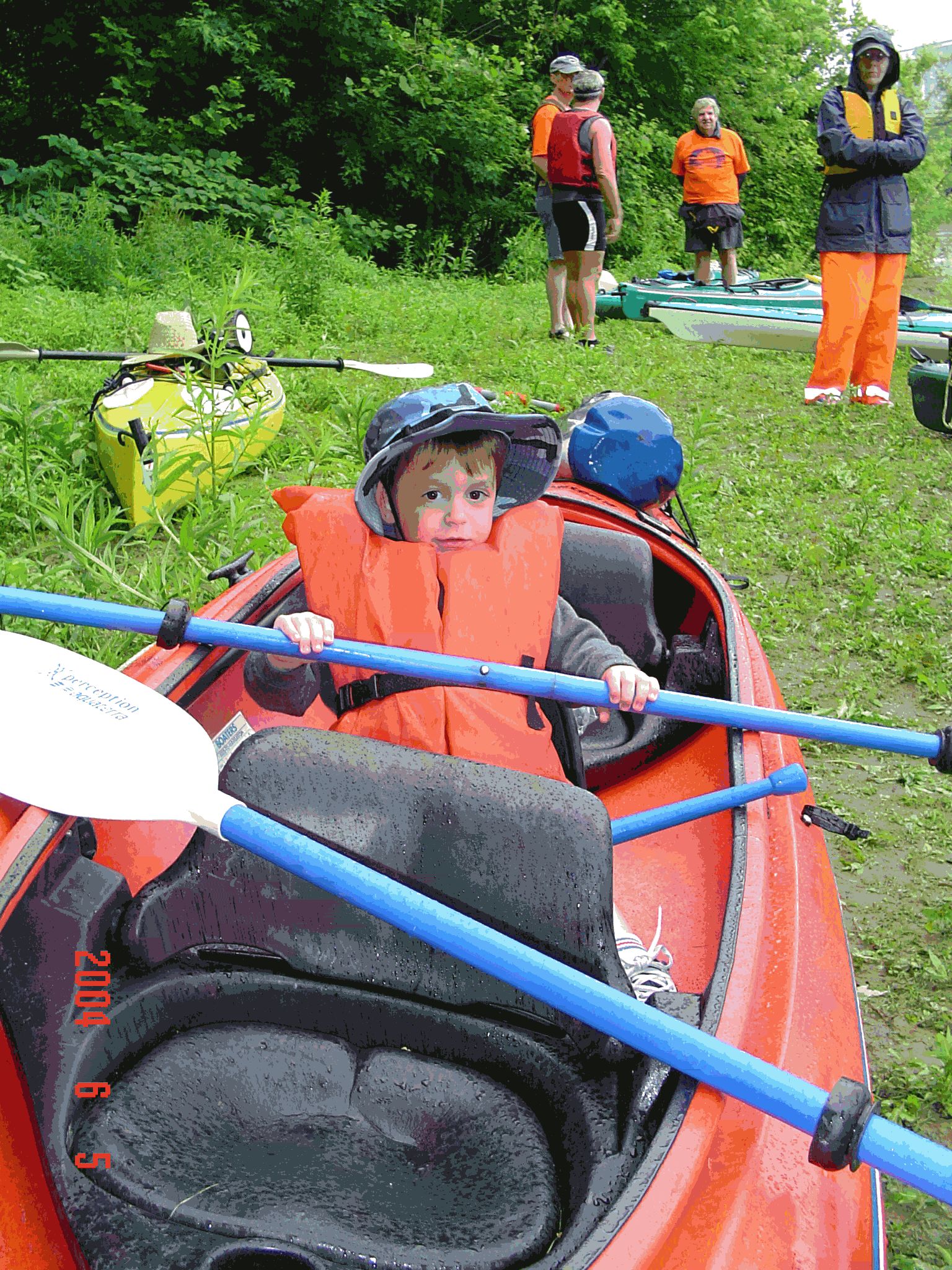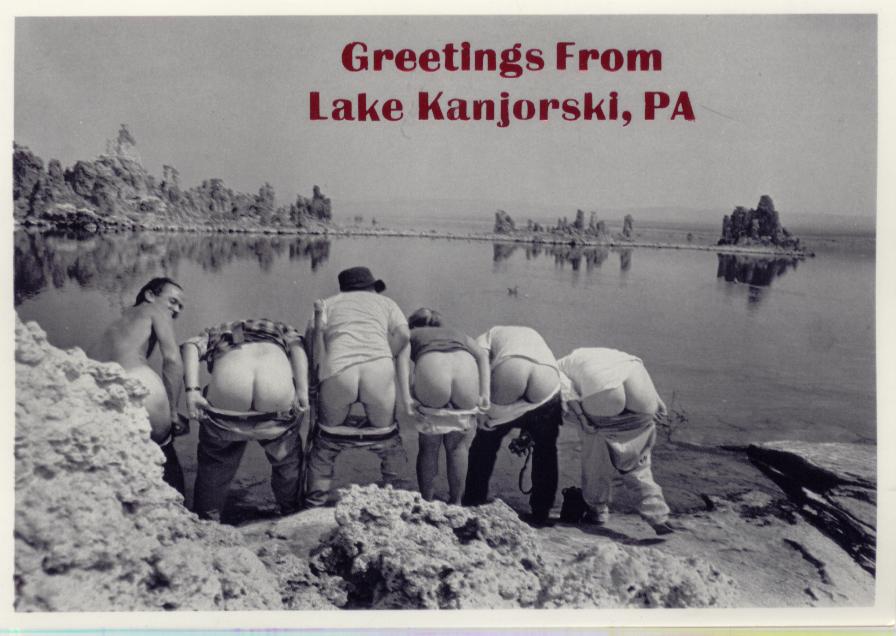
Susquehanna River
One of the great wonders of the Chesapeake Bay watershed is that you can stand in southern New York state and place a small wooden boat in one of the tributaries of the Susquehanna River and follow it into and through the Chesapeake Bay and then out into the Atlantic Ocean.--GreenWorks.com
Is Lake Kanjorski dead in the water?
We've come to learn that the reason the public hearings (originally scheduled for December '05) concerning the proposed deflatable dam were pushed back until after the November '06 election was because the public comment period did not go well at all. "Brutalized" was the way it was described to me.
And now we're hearing that some of the governmental agencies involved with the proposed deflatable dam project are recommending that the project not go forward.
How about if we have those public hearings before the November elections and let the acid mine drainage flow where it may? Our local congressman has been pushing hard for this project for a long time. I'm sure he wouldn't object to rescheduling those hearings in advance of the election. Or would he?
Damn it now and--maybe--clean it later? Paul Kanjorski's comments on his proposed dam have meandered back and forth over the years even more than the Susquehanna meanders when the river's level is low.
|
Kanjorski agrees the combined sewage overflows are problems, but not enough to deliver a crushing blow to the dam. An inflatable dam further south in Sunbury, Northumberland County, actually has lower water quality, Kanjorski argued.
"We may disagree in some facets of the problem, but we have an overall agreement there should be a high priority in getting federal and state funds to conduct a cleanup," Kanjorski said of American Rivers' report. He plans to use the findings as an ally to obtain $30 million in federal funding needed to correct the most severe overflows in the Wyoming Valley, centered in the Wilkes-Barre and Kingston area. Six million dollars in funding already has been secured to correct the most severe problems along River Street in Wilkes-Barre. Acid mine drainage also will discourage the public from using the water for recreation, American Rivers' report said. The report claims water is so polluted it could discolor the bottoms of boats or bridge piers. "Quite frankly, the content of acid mine drainage and other pollutants are less than in Lake Augusta (Sunbury) today and there would be no greater runoff into the area covered by the dam," Kanjorski said Thursday. "Since the dam does not impede the flow, there would not be any greater quality (of acid mine drainage) in the dam's pond than in the general river. |
|
Kanjorski said the Sunbury dam isn't an appropriate comparison because it is in a largely rural area. A better parallel, he said, is Tempe, Ariz., whose 6-year-old Tempe Town Lake - created by an inflatable dam across the Salt River - attracts millions of people and has given rise to hundreds of millions of dollars in new development.
The dam would only be inflated about half the year, Kanjorski noted, and even when it is, it won’t slow the river. “The water continues to flow at the same rate whether the dam is there or not. That’s how dams work,” he said. “It in no way creates a cesspool.” One example he cites is Indianapolis, which has undergone a dramatic downtown revitalization that includes linkage to the White River. Similar benefits can be realized locally, he says. Rep. Paul Kanjorski has pointed to the inflatable dam in Sunbury, which he has said attracts more than 300,000 visitors every year for fishing and boating. |
Acid Mine Drainage: Susquehanna's 'Unknown Danger' from WTOPnews.com:
|
WASHINGTON - A small part of northeastern Pennsylvania is causing big problems for the Susquehanna River.
"A portion of the Susquehanna River that flows through the Wyoming Valley in Pennsylvania provides for the majority of the impurities and problems of not only the Susquehanna but also the Chesapeake Bay," says Rep. Paul Kanjorski, D-Pa. |
Screw it. We'll worry about all of that at a later date.

A toddler calls the river "chocolate water." And a fisherman calls it "chocolate milk." But, our congressman portrays it as a tourist magnet. (???)
Nutrient and Sediment Levels High in Susquehanna From WTOPnews.com.
| PORT DEPOSIT, Md. -- "A couple of days of rain and it will look like chocolate milk," says fisherman Kevin Draper as he casts his line. |

Statement of Congressman Paul E. Kanjorski Regarding the Proposed Inflatable Dam for Luzerne County (June 29, 2000)
|
I believe in the Susquehanna; for too long it has been viewed only as a threat from flooding and an open sewer. We are now poised to transform the river from a liability into a valuable asset.
But we have some work to do. The water quality has improved substantially since the late 1980’s when the Wyoming Valley Sanitary Authority completed its secondary treatment plant. One of the first things I did when I was elected to Congress was to secure 75 percent federal funding – more than $35 million – to complete that project, which has significantly reduced the bacteria level of the river. However, as the Gannett-Fleming report points out, we still have raw sewage entering the river during periods of heavy rainfall, when sanitary treatment plants are overwhelmed with stormwater mixed with sewage. It is my understanding from early engineering reports that the eight worst overflows can be corrected for about $8 million, reducing the problem dramatically. |
Position Statement on the Proposed Inflatable Dam from the Greater Wyoming Valley Audubon Society. (January 8, 1996)
| In addition to the potentially negative consequences for wildlife, we are also concerned that the dam's proponents are encouraging acceptance of the project on the basis that it will provide new water-related recreational opportunities for the residents of the Wyoming Valley. The 1994 Wilkes University study reportes that fecal coliform levels in the Susquehanna River greatly exceed acceptable standards for swimming as defined by the Pennsylvania Department of Environmental Protection. (Fecal coliform levels in River water in Wilkes-Barre measured 600 counts per 100 milliliters; the DEP standard is 200 counts per 100 mL.) Moreover, a Federal Superfund site (the Butler Mine Tunnel, from which toxic and/or carcinogenic substances have discharged) is located some eight miles upstream of the proposed dam site, and thirty or more combined sewer outfalls, from which raw sewage flows into the River during high flow episodes such as thunderstorms, line the River immediately to the north. The potential presence of harmful bacteria, toxic chemicals, and raw sewage lead us to question the wisdom of encouraging recreation in an artificial lake that might concentrate these harmful substances. |

The Bay's biggest tributary faced major stresses in 2005 from the Chesapeake Bay Foundation. (December 9, 2005)
|
If you want to know how well the effort to save the Bay is progressing, you need look no further than the Susquehanna River. The river, which drains 40 percent of the entire Bay watershed, contributes a whopping 45 percent of the all the freshwater in the Bay annually. Suffice it to say, the health of the Susquehanna and the Bay are intimately tied.
2005 was a tumultuous year for the Susquehanna. In early March, Pennsylvania's DCNR named the West Branch their “River of the Year,” as the waters there rebounded after decades of abuse from large-scale timbering and mining industries. Then, in April, a national river organization named the entire Susquehanna as the year's “Most Endangered River” in the country for 2005. Hundreds of raw sewage discharges, agricultural runoff, sprawl, and a proposed inflatable dam in Wilkes-Barre were the reasons cited for the designation. The embattled Susquehanna doesn't need another $14 million dam. That money would be far better spent replacing and updating deficient sewer-treatment systems throughout the watershed. Besides, it's hard to imagine boaters flocking to a reservoir that will likely become a virtual cesspool of algae blooms and deposits of suspended wastes. |
Damn Thoughtless from CanoeKayak.com. (December 2005)
| The embattled Susquehanna doesn't need another $14 million dam. That money would be far better spent replacing and updating deficient sewer-treatment systems throughout the watershed. Besides, it's hard to imagine boaters flocking to a reservoir that will likely become a virtual cesspool of algae blooms and deposits of suspended wastes. |
From GraduatingEngineer.com: (12-11-99)
|
by Elizabeth Grossman
The damming of American rivers has transformed the country, and in doing so created environmental problems whose resolution will greatly influence how we live in the next century. The great dam building of the past hundred years paralleled the progress of this American century. Jobs were created, farms and ranches irrigated, and factories built that helped win wars and furnish the American dream. Cities rose in the desert, floodplains were drained, and rivers channeled to suit civic vision. Now, barely a generation or two later, the cost of this extraordinary engineering is acutely apparent. Species of fish, once so numerous as to be legendary, are on the brink of extinction. Some are extinct. Seasons of destructive flooding have prompted reassessment of the value of wetlands, nature's reservoirs. The era of big public works projects is over. Questioning the value of dams requires a serious readjustment in the country's notion of progress. The efficacy of dams is being scrutinized in new comprehensive analyses of ecology, economics, energy efficiencies and local needs. Across the country, communities are identifying marginal dams, and challenging the relicensing of dams whose environmental impacts are too costly. Questioning the value of dams requires a serious readjustment in the country's notion of progress, a process daunting to all, threatening to some. Yet dams have been removed in Maine and North Carolina, in Oregon, Vermont, Wisconsin and California, as communities rethink priorities and commit themselves to river restoration. "Dams are not like the pyramids of Egypt," said Secretary of the Interior Bruce Babbitt in July of 1998. "They ... should be judged by the health of the rivers to which they belong." The number of dams in the country is estimated at 60,000 to 80,000. Dams alter and block the natural flow of rivers, interfering with fish migration, often destroying native fish populations. They change water temperatures and degrade water quality; both damaging to vegetation and wildlife. Dams hold back silt, debris and other nutrients that create healthy environments for river species. The number of dams in the country is estimated at 60,000 to 80,000. According to American Rivers, a non-profit organization, approximately 600,000 miles of what had been free-flowing rivers in the country, are now slackwater behind dams. The Federal Energy Regulatory Commission, who has jurisdiction over most of the nation's privately owned dams, lists well over 200 hydroelectric dams now due to be relicensed—with as many as 500 coming due in the next ten years—providing an opportunity to reconsider the future of those dams. Dams alter and block the natural flow of rivers, interfering with fish migration, often destroying native fish populations. But we have become accustomed to the "benefits" of dams. In the West, heavily subsidized power, irrigation and shipping passage for the products of the inland Northwest form an influential piece of the region's economy. In many places reservoirs created by dams are recreational magnets, ingrained in the custom and character of their communities. Damming for flood control, drinking water and the diversion of wetlands stimulated the growth of urban centers. Removing dams affects all of this. Will local communities, states and the federal government be willing to pay the costs of restoring rivers and making the changes needed to do so? |
After reading that, see if you can spot a trend goin' on here?
Reviving the World's Rivers: Dam Removal--International Rivers.org
Dam removal today--American Rivers.org
Open rivers initiative--Theodore Roosevelt Conservation Partnership.org
Connecticut River...Restoration Initiative--EPA.org
Officials consider dismantling aging dams--U.S. Water News Online
A trend? Any trend at all?
From the US Army Corps of Engineers web site.
|
Built more than 50 years ago to solve water problems in the Ojai Valley near Ventura, Calif., the Matilija Dam is now obsolete, and the plan is to tear it down. The Los Angeles District recently concluded a five-year study of the dam and formulated a plan to remove it, marking the beginning of the first Corps of Engineers dam removal of this scale and scope for the nation.
“It would be the biggest dam in the country to come down,” said Ventura County Supervisor Steve Bennett. “And the idea of establishing a free-flowing river in Southern California—restoring the river to its natural setting—is really remarkable.” |
Ready for the bombshell?
OUCH!!!

Is Lake Kanjorski dead in the water?
You betcha!!!
Later
"The finest workers in stone are not copper or steel tools, but the gentle touches of air and water working at their leisure with a liberal allowance of time."--Henry David Thoreau